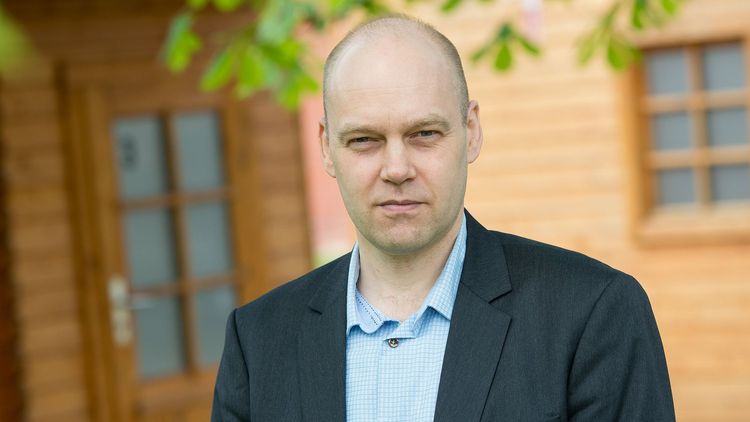Biologist Henrik Mouritsen from Oldenburg and his British colleague Peter Hore receive a highly coveted research funding by the EU - the ERC Synergy Grant. They are determined to crack a problem that has fascinated man for more than 150 years.
How magnetoreception functions in birds is one of the most exciting open questions in biology today. Scientists suspect that the avian magnetic “compass” is located in their eyes and is based on quantum chemical phenomena. Henrik Mouritsen, Professor of Neurosensory Science at the University of Oldenburg, and Peter Hore, Professor of Chemistry at the University of Oxford, have been awarded a joint grant amounting to 8.6 million euros by the European Research Council (ERC) for their project “QuantumBirds”. The two experts aim to clarify in detail how birds detect the Earth’s magnetic field. The ERC Synergy Grants provide funding for teams of two to four outstanding scientists and aim to facilitate ground-breaking research at the intersection between established disciplines. The ERC evaluated 295 research proposals, of which 27 were selected for funding.
“The scientific expertise of the two researchers Henrik Mouritsen and Peter Hore is uniquely complementary, as are the experimental capabilities available at the two universities. This highly prestigious European grant is both an honour and an acknowledgement,” said Professor Hans Michael Piper, President of the University of Oldenburg.
Detecting extremely weak stimuli
“If the magnetic perception of birds is indeed based on quantum mechanical processes, we will have demonstrated that biological sensory systems can detect stimuli a million times weaker than scientists currently thought possible. This would be fundamentally important,” Mouritsen explained. “Our goal is to understand quantum mechanisms in biology and thus for example lay the foundations for the development of novel and powerful bio-inspired magnetic sensing devices.”
Whereas humans perceive the world around them using five senses – sight, hearing, taste, smell and touch – many animals can also perceive the Earth’s magnetic field. Scientists already know that the magnetic compass of migratory birds relies on light: they can, in a sense, “see” the magnetic field. The experiments Mouritsen and Hore have conducted so far indicate that light affects retinal proteins (known as cryptochromes), causing them to react to the extremely weak geomagnetic field. “At first glance it seems barely conceivable that a chemical reaction could form the basis of a geomagnetic compass,” said Mouritsen. The chaotic movements of individual protein molecules are stronger than the impact of the geomagnetic field by many orders of magnitude, which is why, from a classical thermodynamical viewpoint, any magnetic effects should disappear in noise, he explained.
Light renders the magnetic field visible
This perspective, however, fails to take quantum chemical processes into account. Light generates an unstable form of cryptochrome, a so-called “radical pair” that exists for about a millionth of a second. According to a theory developed by the German biophysicist Klaus Schulten in 1978, the result of this reaction depends on the direction of the geomagnetic field. With their “QuantumBirds” project Mouritsen and Hore now aim to establish whether ultrasensitive quantum processes really are the key components of the magnetic compass in migratory birds. A lot of their work will rely on cryptochromes made in cell cultures.
The results of the project are expected to make a valuable contribution to bird conservation, Mouritsen stresses. The two scientists demonstrated in 2014 that even weak electromagnetic noise can disrupt the magnetic orientation of migratory birds, but they did not know why. “If we understand the quantum mechanical reasons for these disruptive effects of manmade electromagnetic noise, we will be better able to protect migratory birds from its detrimental effects,” he explained.
Mouritsen and Hore have already worked together on several projects and are determined to solve this problem which has fascinated biologists for more than 150 years. The results of their research project could potentially also be used in quantum computers and to develop innovative biological sensors.
About Professor Mouritsen
Henrik Mouritsen studied biology and chemistry at the University of Southern Denmark, where he also earned his PhD. He has been teaching and conducting research at the University of Oldenburg since 2002: initially he led a junior research group and from 2006 to 2014 he held a Lichtenberg Professorship. He has received several awards for his research, including the prestigious “Eric Kandel Young Neuroscientists Prize.”
About Professor Hore
Peter Hore studied Chemistry at the University of Oxford, was a postdoc in Groningen, returned to Oxford as a Junior Research Fellow in 1982 and a year later was appointed to his present position as Professor of Chemistry. In 2016 he was awarded the Interdisciplinary Prize of the Royal Society of Chemistry.

